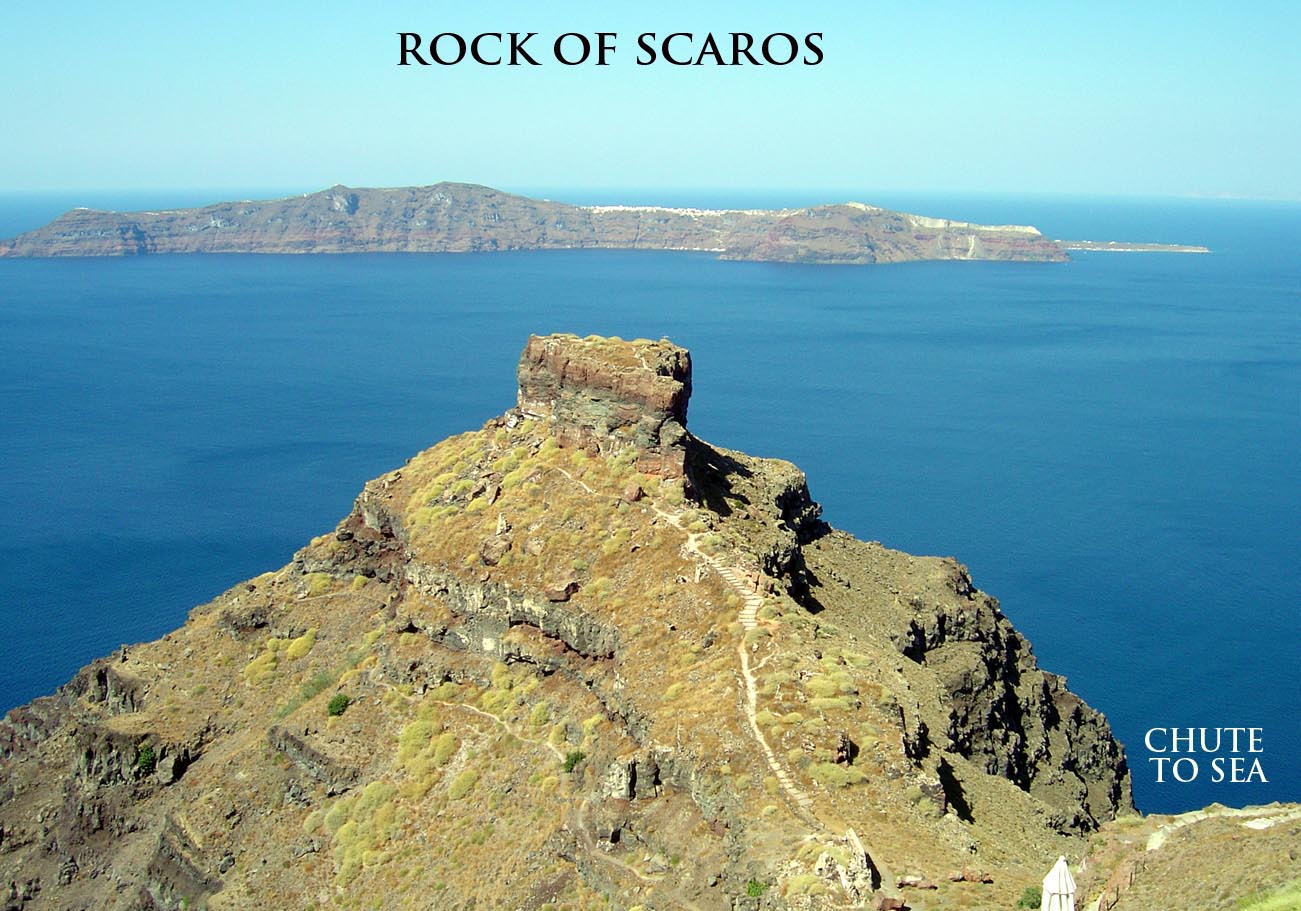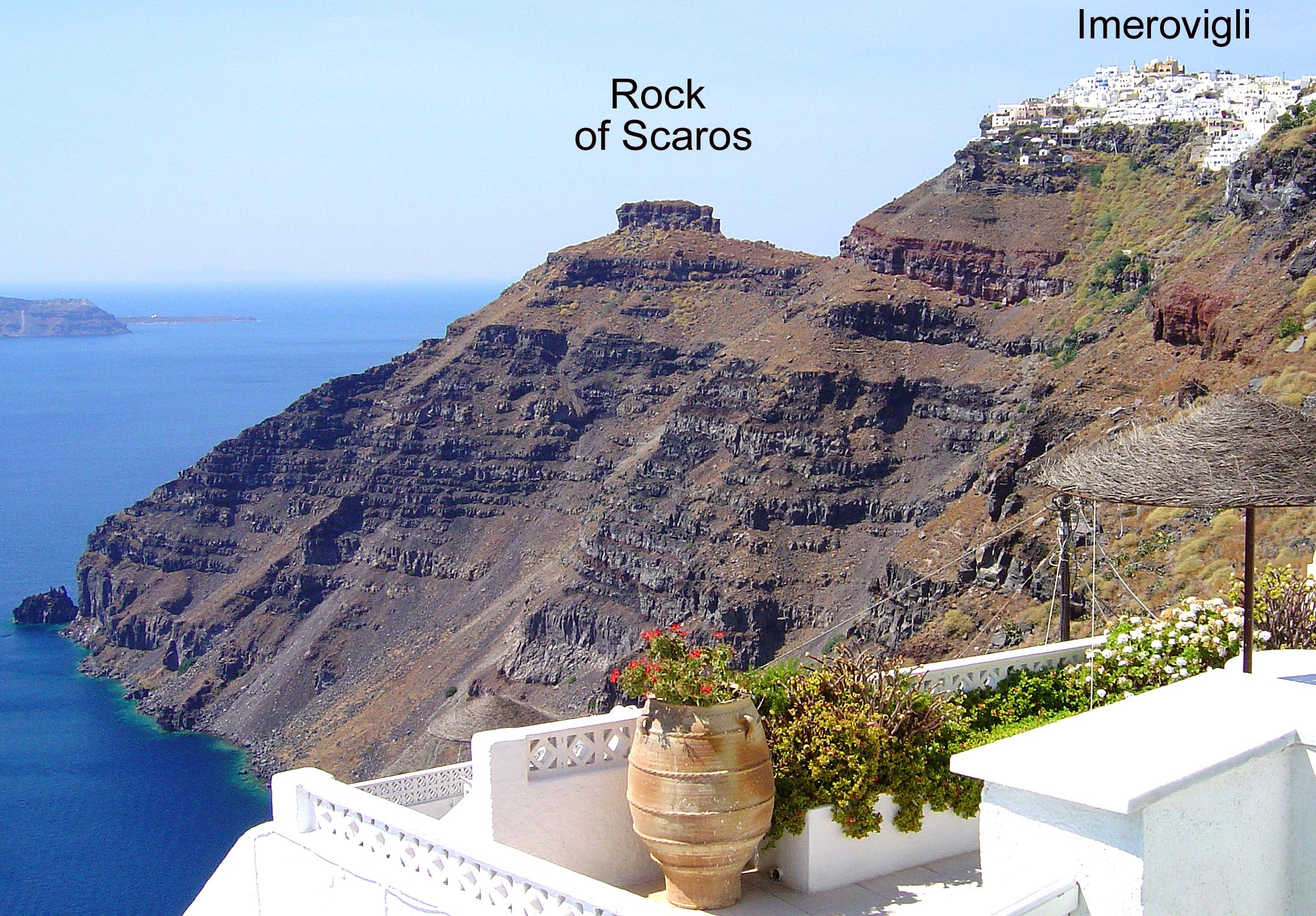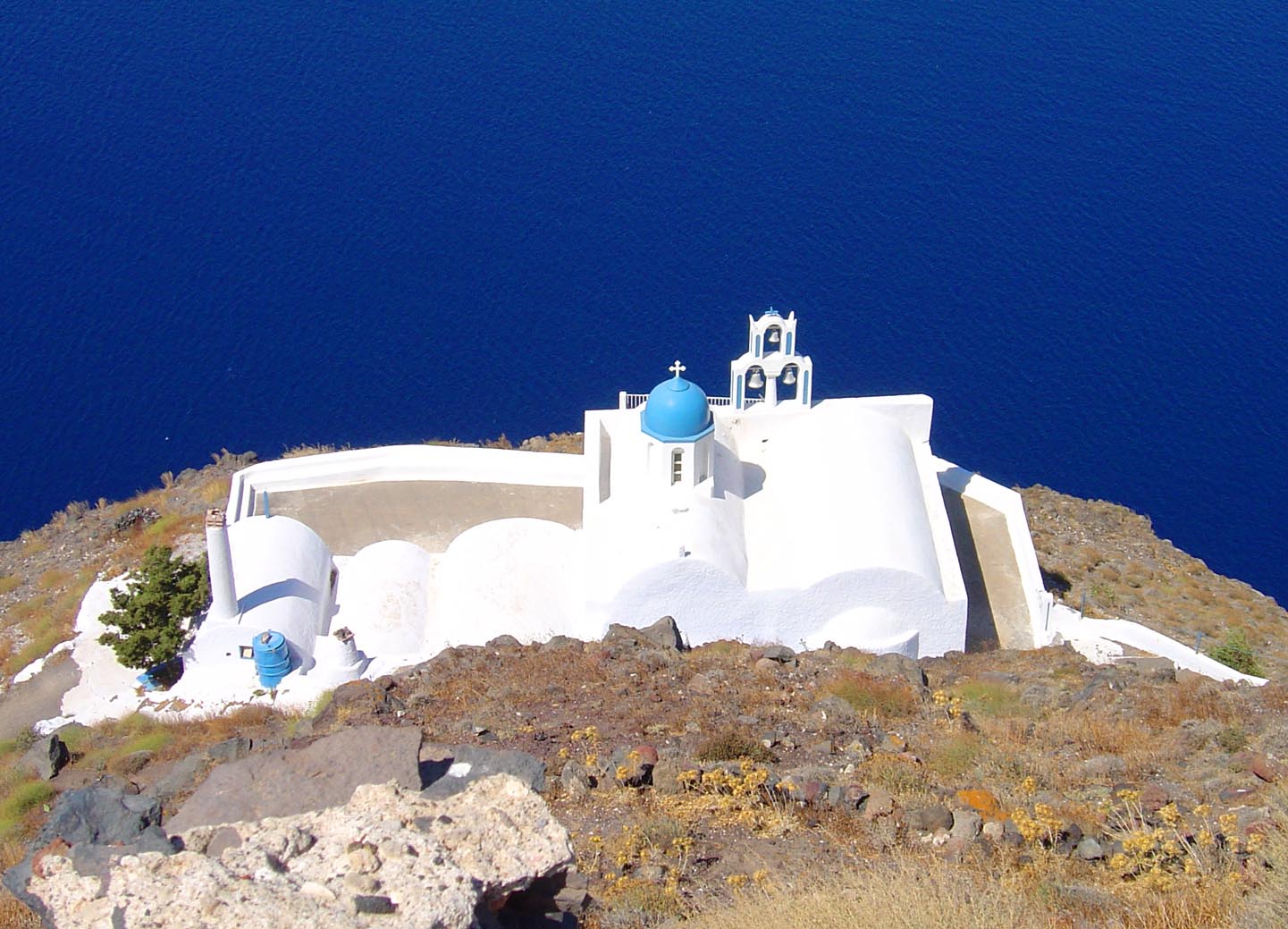Next to the town of Imerovigli the crater rim protrudes into the sea forming the Rock of Scaros. Once upon a time there was a castle on this rock that was undefeated for 600 years but its ruins are now all gone. From the town there is a trail to the rock and to a small picturesque church on the western slopes of the rock. A side trail ends below the 30-foot summit rock. From there on it is a short class 3 scramble to the top. Few visitors make it. The view from the top is gorgeous. But this is not the end of the story. Earlier I had inquired with the locals about a path down the crater walls to the sea. They all smiled and said it is not possible because of vertical cliffs, unstable volcanic rock and random rockfall. Indeed, the 1000-foot crater rim looks formidable. But what is life without a challenge. In addition, the heat of the day calls for a dip into the Mediterranean. From Mt Scaros I spotted a possible chute on the north side of the rock. It leaves near the ruins of a small chapel near the trail. It seemed free from vertical cliff bands although one could not completely see down to the bottom. I thought it over, returned the next morning and headed down into the north chute before the sun heated up the lava rocks. No trail, no footsteps, plenty of loose soil, porous rocks and prickly plants. While descending, the rocks tumbled down and the dust rose but I was pretty sure nobody was below me. A flock of quails took suddenly off and I was not sure who scared whom more. Too bad the occasional wild fig trees in the chute had no fruit. Fortunately, Murphy's law has only a 50% chance and I was lucky that the chute went down without vertical cliffs. After an hour I had a well-deserved dip into the green-blue sea. I dried off in the wind and sun, then was ready for the climb up. It was best to reclimb the chute near the rocky side walls. Although a good workout it went without difficulties. It was a fun morning before leaving beautiful Santorini in the afternoon. Can highly recommend this hike to other adventurous visitors to the island.


